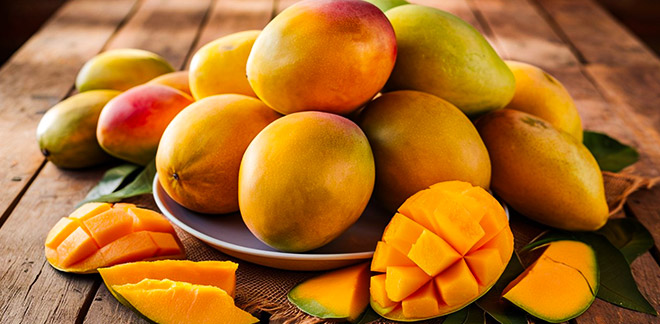Peruvian mango: The sweet delicacy taking the world by storm
Síguenos en:Google News
Mango is a superfood that not only pleases the taste buds but also provides a wealth of health benefits
Mango is one of the standout tropical fruits in Peruvian agriculture, celebrated both locally and internationally for its sweet flavor, smooth texture, and vibrant color. Below, we will explore the key factors that make this delicious fruit so remarkable.
 Source: Adrian Portugal / PROMPERU
Source: Adrian Portugal / PROMPERU
Production sites
Mango production in Peru is primarily focused in the northern regions of Piura, Lambayeque, and Ancash, where the climate and water resources are perfect for growing these fruits.
Thus, according to Adex Data Trade, in the first half of 2024, mango exports reached 66,665 tons, with a value of USD 187 million.
Focusing on the most important mango-producing regions in the country, Piura leads with 41,411 tons valued at USD 112 million, followed by Ancash with 17,631 tons worth USD 57 million, and Lambayeque with 6,881 tons valued at USD 15 million, according to Adex Data Trade.
 Source: Adrian Portugal / PROMPERU
Source: Adrian Portugal / PROMPERU
Export markets
Appreciated for their quality and freshness, Peruvian mangoes have gained significant traction in key international markets. According to Adex Data Trade, Europe leads as the main destination, with the Netherlands at the top (29,017 tons). It is followed by the United States (19,335 tons), the United Kingdom (4,705 tons), Spain (4,432 tons), Canada (1,799 tons), South Korea (1,570 tons), France (1,447 tons), and Chile (1,191 tons).
 Source: Adrian Portugal / PROMPERU
Source: Adrian Portugal / PROMPERU
What is your value chain like?
It all begins on the farms, where growers work to ensure that mangoes are cultivated under ideal conditions. Harvesting is performed with great care to prevent any damage to the fruit, which is essential for preserving its quality. Notably, this is the longest phase of the chain, as it takes 3 to 4 years to plant and cultivate the seedlings (plants in their early stages of development).
Next, in the intermediary phase, the mangoes are transported to markets and packing houses. Producers use hydrothermal and freezing equipment during this stage. The mangoes undergo selection, washing, grading, and packing in processing plants that adhere to high-quality standards based on their ripeness. The fruit is washed, brushed, and rinsed to remove any contamination, and disinfection is also performed.
This step is crucial to ensure that the mangoes reach international markets in excellent condition. Exporters handle the logistics and transportation, making sure that the mangoes arrive fresh and on time at their destinations.
Depending on the destination market, mangoes are distributed through various local intermediary channels, such as wholesalers, retailers, or processing-packing companies. For international markets, marketing is handled through brokers, trading companies, or business clients, with pallets (12-box containers) being used for shipping.
Mango in style
Parades, dances, floats, and contests featuring mango recipes are some of the highlights of the International Mango Festival, held annually in February in the warm valley of El Ingenio, in Ica. The festival aims to attract both national and international tourists, showcasing the region’s vibrant culture and mango heritage.
Great contribution to health
Mangoes are a fantastic source of vitamin C, which boosts the immune system and supports tissue repair. They also provide vitamin A, essential for improving vision in low light and promoting cell growth, as well as vitamin E, which serves as a powerful antioxidant.
Mangoes also offer essential minerals like potassium, which is crucial for fluid balance and proper muscle function, and magnesium, important for bone and muscle health. Additionally, they provide iron, calcium, and phosphorus. Mangoes contain fiber (1.8 grams per 100 grams of fruit), which supports the digestive system and promotes healthy intestinal flora.
How to consume mangoes?
Mango is a versatile fruit that can be enjoyed in many ways. Its sweet flavor makes it perfect for eating fresh, whether on its own or in salads. Mangoes can also be used to prepare juices, smoothies, ice creams, and desserts such as mango mousse, pie, and flan.
Additionally, mango jam is a great addition to breakfast and other meals. In the kitchen, mango has earned a special spot, often used in signature dishes like Cebiche.
More than just a fruit, mango is a product that drives the economy, enriches culture, and delights countless taste buds. Its production, export, and value chain showcase the hard work and dedication of thousands of farmers and companies striving to deliver the finest Peruvian mango to global markets.
 Source: Jimena Agois / PROMPERU
Source: Jimena Agois / PROMPERU








